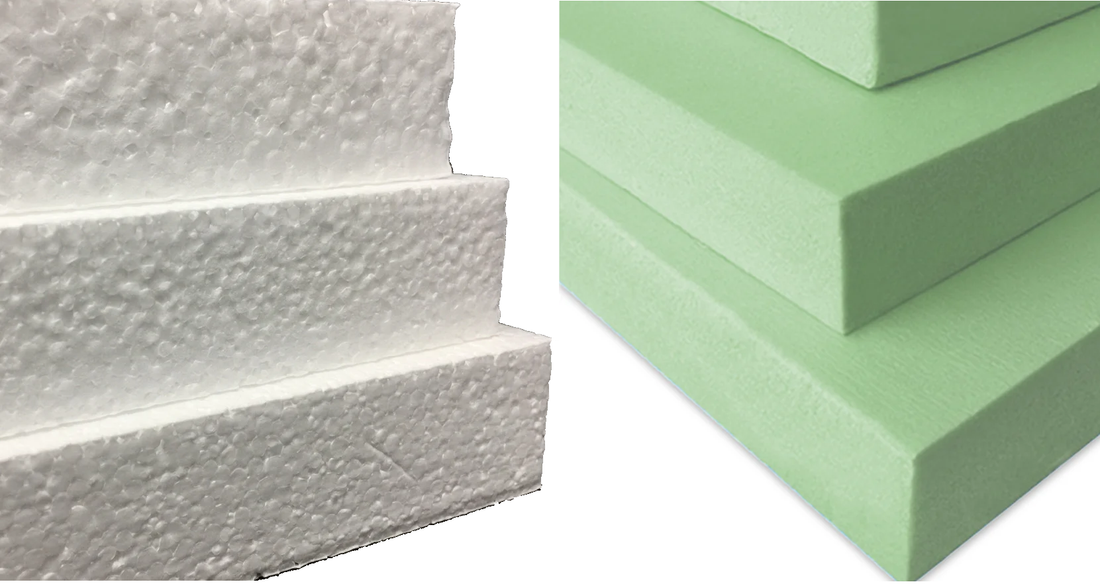When it comes to crafting and DIY projects, choosing the right material can make all the difference in achieving professional results. Two popular foam types—Extruded Polystyrene (XPS) and Expanded Polystyrene (EPS)—are often at the forefront of crafting discussions. While both have their uses, XPS foam stands out as the superior choice for many applications. In this article, we’ll explore the key differences between XPS and EPS foam, highlight why XPS is your best bet for craft and DIY projects, and provide a concise comparison of their pros and cons.
Understanding the Basics: XPS vs. EPS Foam
-
Composition and Structure:
- XPS Foam: Made through a process of extrusion, XPS foam has a closed-cell structure, which gives it a uniform density and smooth surface. This structure enhances its durability and insulation properties.
- EPS Foam: Produced by expanding polystyrene beads, EPS foam has an open-cell structure. While it is lightweight and cost-effective, its surface can be uneven and less dense, leading to potential challenges in crafting.
-
Weight and Density:
- XPS Foam: XPS foam is denser than EPS foam, making it sturdier for a variety of applications. This density means it can support more weight, making it ideal for larger projects like architectural models or dioramas.
- EPS Foam: Although lighter and easier to handle, EPS foam can be more fragile and prone to crumbling when cut or shaped, which can be frustrating for crafters.
Why XPS Foam Shines in Crafting and DIY
-
Ease of Use:
- XPS foam is easier to cut and shape with clean edges, thanks to its smooth surface. This quality is particularly important when crafting detailed models or intricate designs, allowing for precision and accuracy in your work.
-
Durability:
- The closed-cell structure of XPS foam makes it resistant to moisture and decay, ensuring that your creations will last over time. Whether you're crafting outdoor decor or indoor displays, XPS foam stands up to the elements.
-
Better Adhesion:
- XPS foam provides an excellent surface for adhesives and paints. Its smooth texture allows for better adhesion of various materials, meaning you can easily embellish your projects without worrying about materials peeling away.
-
Versatility:
- From dioramas and architectural models to cosplay props and home decor, XPS foam is versatile enough to handle a wide range of projects. Its durability and ease of manipulation make it a favorite among crafters and DIY enthusiasts.
-
Thermal Insulation:
- While not always a primary concern for crafters, the thermal insulation properties of XPS foam can be a bonus, particularly for projects that may be exposed to varying temperatures. This feature helps maintain the integrity of your creations.
Pros and Cons
| Material | Pros | Cons |
|---|---|---|
| XPS Foam | - Durable and moisture-resistant - Easy to cut and shape with clean edges - Excellent adhesion for paints and adhesives - Versatile for a wide range of projects - Good thermal insulation |
- Slightly more expensive than EPS foam - Limited availability in some regions |
| EPS Foam | - Lightweight and cost-effective - Easy to handle for simple projects - Good insulation properties |
- Less durable; can crumble easily - Uneven surface can make crafting more challenging - Not ideal for detailed or heavy-duty projects |
Conclusion
While both XPS and EPS foam have their places in the crafting world, XPS foam clearly outshines its counterpart in terms of durability, ease of use, and versatility. Whether you’re a hobbyist looking to create intricate models or a DIY enthusiast embarking on a home project, choosing XPS foam will help you achieve outstanding results with less hassle.
So the next time you’re planning your crafting adventure, consider XPS foam as your go-to material. With its superior qualities, you’ll be well-equipped to bring your creative visions to life!

